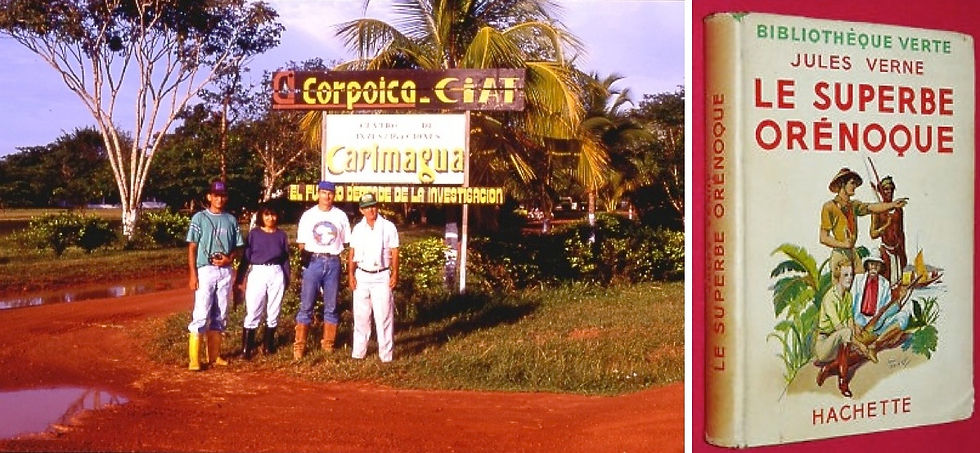Hide-and-seek with the guerilla
- M. Lecoq
- 3 mai 2015
- 2 min de lecture
In 1996 I just arrived at the CORPOICA research station, in Carimagua, in the Colombian llanos, extensive plains dedicated to pasture and drained by the tributaries of the left bank of the Orinoco. I think to my childhood readings of the Jules Verne famous book: "Mighty Orinoco". Since leaving Bogota, I realize that, every day, my Colombian companions are concerned about the presence of the guerrillas. They try to get information from local authorities to choose their itinerary. How to recognize a guerrillo from a soldier? The only answer was: "We only know after". Delightful perspective.

I arrived in Colombia from Brazil on October 5. The Colombians, knowing my works in this country and having the same problem, asked for my expertise. From Bogota we flew to Villavicencio, at the foot of the Andes, the "Gateway to the llanos", only 90km from the capital. Why not take a car? The answer comes a few days later: a French guy, who traveled by car on the same day, was kidnapped by the guerrilla. Finally, my Colombian colleagues wisely organized my mission!
The locust species involved was Rhammatocerus schistocercoides (Rehn, 1906). Here, as in Brazil, outbreaks took everyone by surprise. The first swarms were reported in 1994 north of the llanos and then quickly spread throughout the region, threatening the cultivated areas in the south. I made a wide tour of the llanos area, from Villavicencio toward Cravo Norte region at the border with Venezuela, via Carimagua and along the Rio Meta. Roads, bad tracks, small plane and ultrashort landing strips forcing to leave some passengers and make two travels. I quickly understood that some areas have to be avoided and that it is better not to be too curious.

But quickly, the explanations appear. My works in Brazil give me the key to the Colombian problem. Here again, I discover that identical outbreaks had occurred in the past, 30 or 40 years ago. A report was forgotten in the depths of a ministerial department... October 17: conference in Villavicencio with a large audience to present my explanations for these outbreaks and propose some recommendations. October 23, end of the mission. Farewell in a coffee shop. My Colombian colleagues finally admit that they are very relieved that the mission is completed successfully and without incident! May be I missed an opportunity of extended and free holidays in Colombia. Would I unconsciously took some risks!

Photos (M. Lecoq) :
- In front of the main gate of the CORPOICA research station in Carimagua
- Jules Verne "The famous Orinoco" published by Hachette in the « Bibliothèque Verte » collection
- Before leaving by plane for the Cravo Norte area
- In the llanos: landscapes near Carimagua
- On a shop wall : « El Grillo » : the super-locust!
Lecoq M., Assis-Pujol C.V., 1998. Identity of Rhammatocerus schistocercoides (Rehn, 1906) Forms South and North of the Amazonian Rain Forest and New Hypotheses on the Outbreaks Determinism and Dynamics [Acrididae, Gomphocerinae, Scyllinini]. Transactions of the American Entomological Society 124(1) : 13-23.



























Comments